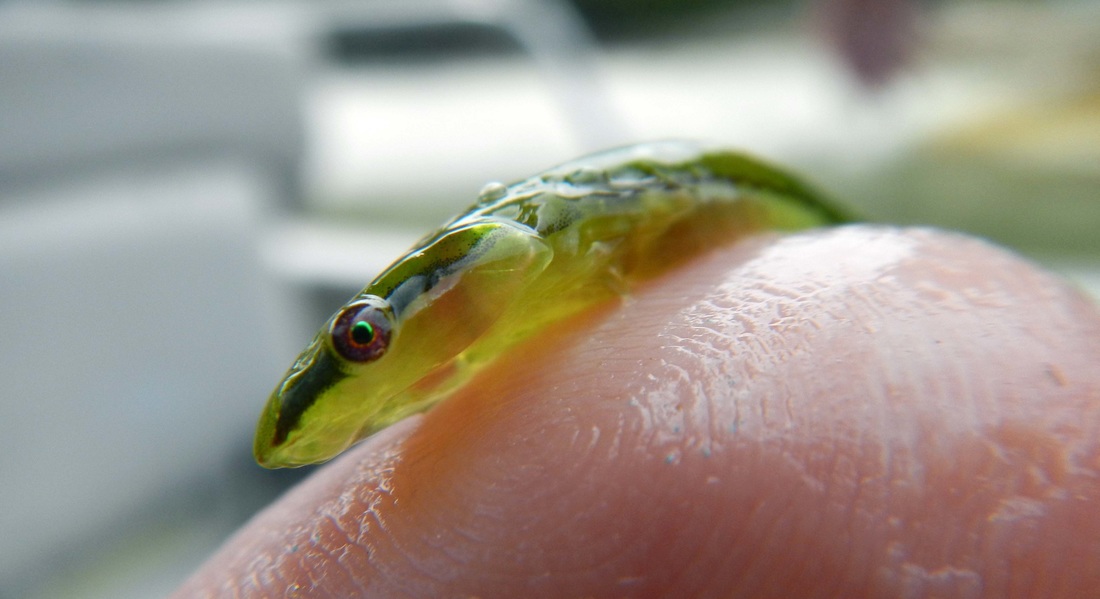Kelp clingfish, slender cling-fish • Rimicola muscarum
Identification
This little fish (to 7 cm long) varies from olive or emerald green to yellow or golden brown. Its fins are small and inconspicuous, and it has a slender, elongated shape. Like other clingfishes, its modified pelvic fins join on its underside to form an adhesive disk — a small one, in the case of this species — which it uses to suction on to eelgrass and kelp.
Habitat & Range
The kelp clingfish camouflages successfully in the eelgrass and kelp beds it inhabits. It is found from the intertidal to 18 m deep, and is common in shallow bays next to exposed shorelines. Its range extends from southern Alaska to northern Mexico.
Intriguing Info
When this fish is examined closely a tiny red heart can be seen beating beneath its skin.
This little fish (to 7 cm long) varies from olive or emerald green to yellow or golden brown. Its fins are small and inconspicuous, and it has a slender, elongated shape. Like other clingfishes, its modified pelvic fins join on its underside to form an adhesive disk — a small one, in the case of this species — which it uses to suction on to eelgrass and kelp.
Habitat & Range
The kelp clingfish camouflages successfully in the eelgrass and kelp beds it inhabits. It is found from the intertidal to 18 m deep, and is common in shallow bays next to exposed shorelines. Its range extends from southern Alaska to northern Mexico.
Intriguing Info
When this fish is examined closely a tiny red heart can be seen beating beneath its skin.
References
Froese, R. and Garilao, C. V. Rimicola muscarum (Meek & Pierson, 1895). FishBase. Accessed 17/09/2015.
Lamb, A. and Edgell, P. Coastal Fishes of the Pacific Northwest. Revised. (2010). Madeira Park, BC: Harbour Publishing. Pp. 284-285.
Lamb, A., and Hanby, B. (2005). Marine Life of the Pacific Northwest [electronic version]. Madeira Park, BC: Harbour Publishing.
Authors and editors of page
Kelly Fretwell and Brian Starzomski (2015).
Froese, R. and Garilao, C. V. Rimicola muscarum (Meek & Pierson, 1895). FishBase. Accessed 17/09/2015.
Lamb, A. and Edgell, P. Coastal Fishes of the Pacific Northwest. Revised. (2010). Madeira Park, BC: Harbour Publishing. Pp. 284-285.
Lamb, A., and Hanby, B. (2005). Marine Life of the Pacific Northwest [electronic version]. Madeira Park, BC: Harbour Publishing.
Authors and editors of page
Kelly Fretwell and Brian Starzomski (2015).





